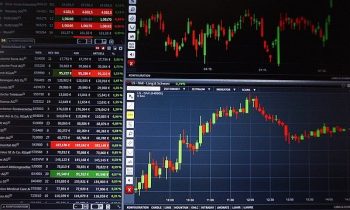
The British Pound found itself lower again on Tuesday, as economic woes weighed upon investors.
GBP/USD posted a second consecutive day of declines, currently down 0.19% to 1.2715. In a volatile day of trading buoyed by a busy economic calendar, UK sales data released showed that British retail sales plummeted at the fastest annual rate for a decade this June.
The Confederation of British Industry reported that the monthly retail sales balance declined to -42 from the -27 recorded last month. However, the CBI did point out that at the same time last year was the FIFA World Cup competition held in Russia. The hot weather and a surprisingly strong showing by the England national team provided a massive boost to sales in 2018. This puts today’s figures in perspective but still rings alarm bells
Overall, the average currency trading platform saw more activity than usual with investors piling into bullish Bitcoin and at the same time monitoring activities in the forex and stock markets. A mixed performance from the US Dollar kept trading levels high and exchanges busy, with forex volumes higher than average for the time of year.
Brexit and Political Concerns Weigh
The British Pound has been vulnerable for a while with ongoing Brexit issues compounded with a political crisis which as has seen Prime Minister Theresa May resign.
Earlier this week, the EY ITEM Club forecast showed that Britain will witness the slowest growth in consumer spending tin 2019 for six years. The last 18 months has seen consumer spending rise on the back of strong economic growth and a robust increase in real earnings growth. However, the outlook for the rest of the year and beyond looks weaker.
The forecast said it considers that earnings growth peaked in early 2019, whilst it was likely that it would stay at that level or below for the remainder of 2019 and possibly into 2020. Employment growth is expected to slow to 1.0% in 2019 and even further down to 0.6% in 2020. In 2018, employment growth was 1.2%.
Ben Myers
Latest posts by Ben Myers (see all)
- 3 Reasons Bitcoin is Still a Safe Haven Asset - June 12, 2020
- GCF Corporation and Genesis Green Initiatives Leading the Way - May 20, 2020
- Why Bitcoin Still Rules the Roost - May 13, 2020






